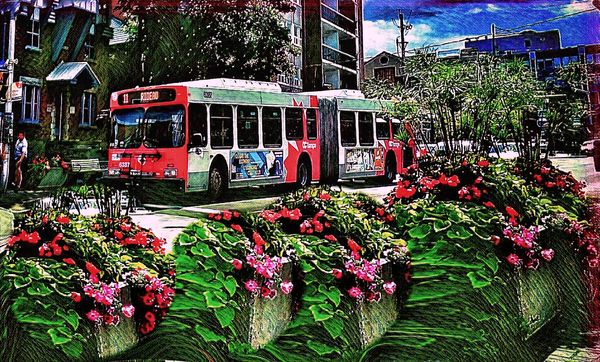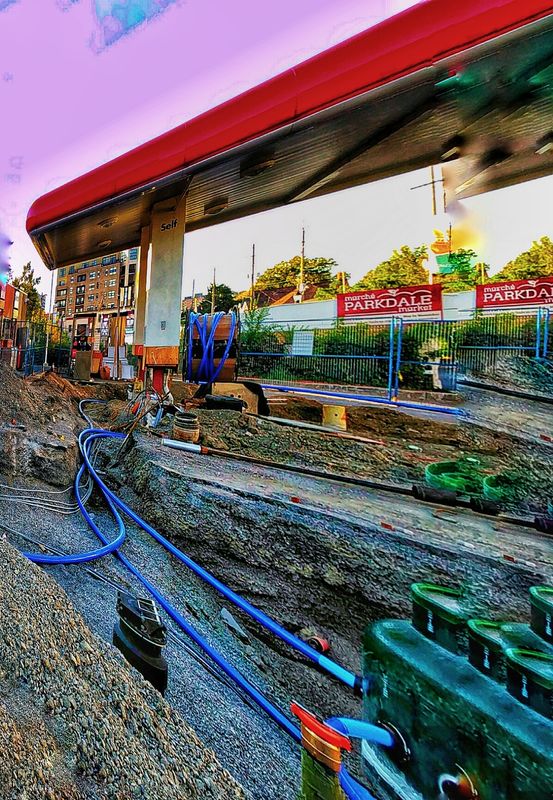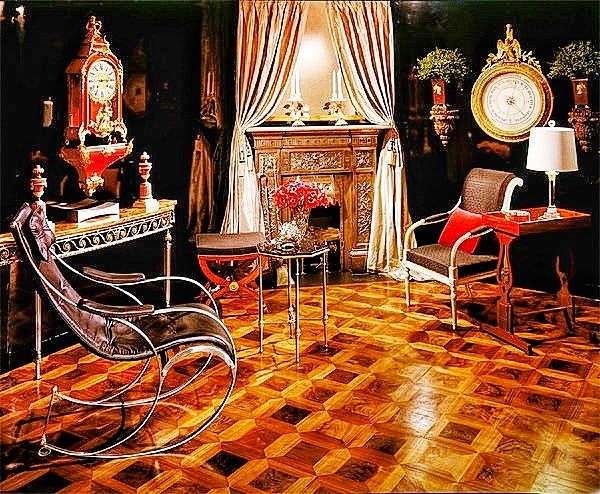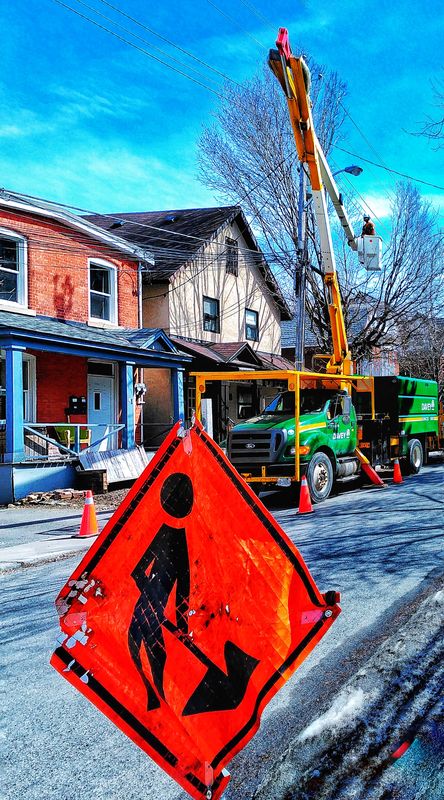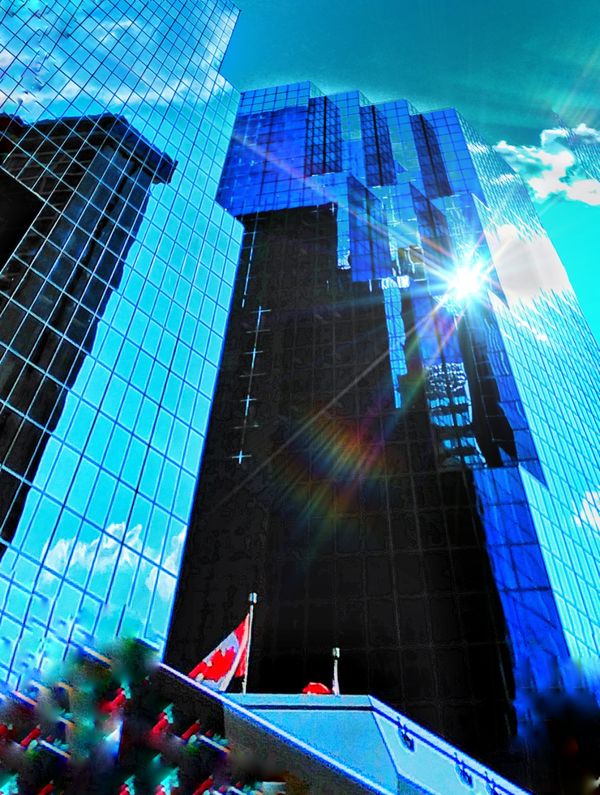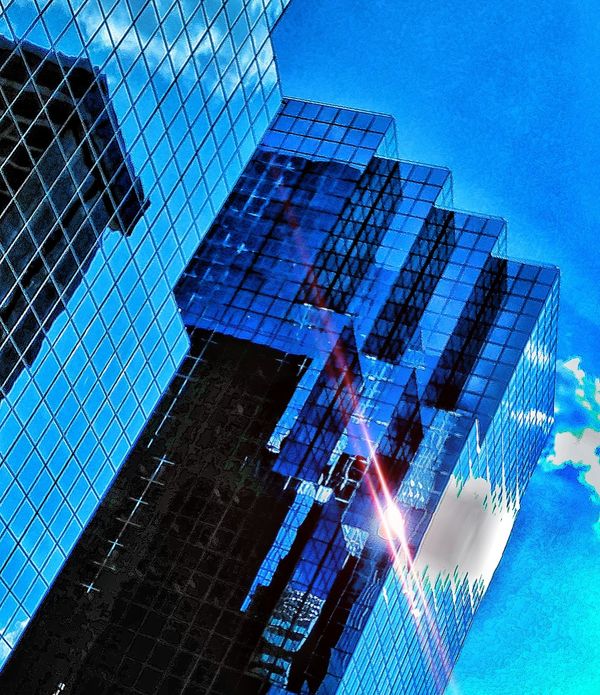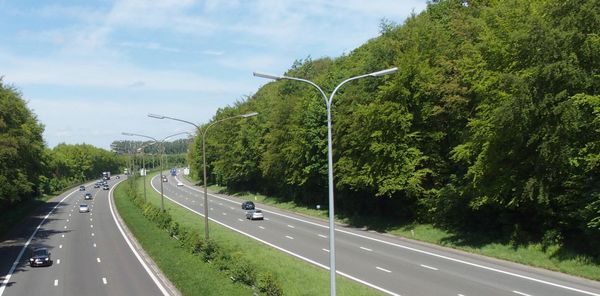A rare topic that's not about gear or exposure modes: the role of perspective in compositions. Please share your photos!
Aug 20, 2018 17:21:18 #
Images for my last post.
Aug 20, 2018 17:22:12 #
Hi Ed! Your comprehensive coverage of the topic theme through real-life experiences, especially relating to creativity, are fascinating and most welcomed!
So grateful for your sharing your time and expertise. Now to study and enjoy the photos!
So grateful for your sharing your time and expertise. Now to study and enjoy the photos!
E.L.. Shapiro wrote:
Sorry folks! I'm a latecomer to the party! I hat... (show quote)
Aug 20, 2018 17:30:46 #
E.L.. Shapiro wrote:
Images for my last post.
These are great compositions. Why the over-saturated colors in photos two through nine? I sorry, but many are over-saturated to the point of being garish. I know you're the expert so you know what you're doing.
Aug 20, 2018 17:37:19 #
E.L.. Shapiro wrote:
Sorry folks! I'm a latecomer to the party! I hat... (show quote)
Excellent, PRACTICAL take on photography. I especially agree with "From a more creative point of view, actual experimentation and practice is just as important and perhaps more practical."
Aug 20, 2018 17:38:31 #
Aug 20, 2018 17:46:26 #
Don't under rate the science. STUDY hard and then put your knowledge and theory into practice.
The proof of any thesis or anti thesis is in the results.
Thing is, the folks who know their onions, can solve more problems when they arise.
The proof of any thesis or anti thesis is in the results.
Thing is, the folks who know their onions, can solve more problems when they arise.
Aug 20, 2018 18:13:49 #
CO wrote:
These are great compositions. Why the over-saturated colors in photos two through nine? I sorry, but many are over-saturated to the point of being garish. I know you're the expert so you know what you're doing.
Yup! Much of my commercial work requires very
graphic approaches. I mean, how do you glamourize a garbage truck? Next time, if the subject arises, I'll post my pastel-like portraiture and high key baby pictures. I miss KODACHROME! Oh, some of those real estate shots are IR.
Aug 20, 2018 18:13:56 #
artBob wrote:
Your second one has two good things giving depth, the framing by the tree and the lovely lines of the dune ridge, river, and sand bar leading us into the distance.
Thank you.
Aug 20, 2018 19:22:44 #
E.L.. Shapiro wrote:
Yup! Much of my commercial work requires very
graphic approaches. I mean, how do you glamourize a garbage truck? Next time, if the subject arises, I'll post my pastel-like portraiture and high key baby pictures. I miss KODACHROME! Oh, some of those real estate shots are IR.
graphic approaches. I mean, how do you glamourize a garbage truck? Next time, if the subject arises, I'll post my pastel-like portraiture and high key baby pictures. I miss KODACHROME! Oh, some of those real estate shots are IR.
I understand your approach to the photos now. I can see that you did this purposely because that was required for the commercial shots. I knew that you're both an experienced portrait and commercial photographer and would do that for a reason.
Aug 20, 2018 20:18:55 #
artBob wrote:
That is false. I took your 105 and 200mm shots and enlarged the 105 so that the most distant towers were congruent. EVERYTHING else is off, as shown in the transparency and in the perspective lines. It would be even worse if 55mm and 200mm compared.
Focal length of lens DOES MATTER.
Focal length of lens DOES MATTER.
You might want to look at Does perspective change when you change the focal length?
I describe a simple experiment that should clear all of this up for you.
Aug 20, 2018 22:19:49 #
I love this topic. Always happy to read through a thread that helps me improve my game. Perspective can be used for educational purposes, not simply artistic merit. We can be transported to a locale that we may never get to visit. Color, saturation, composition aren’t my greatest in these two photos. I wanted to convey expanse. I took two photos to help explain to friends how mind boggling huge the concentration camp part of Birkenau/Auschwitz was in Poland. The camp is a square. One photo is towards the Birkenau opening gate taken from the rail line, the second is also taken towards the gate but at the end of the rail line inside the camp, about 25 yards from the electrified fence. The size of the camp at Birkenau is difficult to comprehend, as is 6 million murders, until you stand and look at the expanse and realize this was one of many. Sorry for the format, the files were on a PowerPoint presentation and I couldn’t transfer and download them except as a word file.
Aug 20, 2018 22:23:47 #
Good shots for your purpose. As presented in Powerpoint, the color is probably better than what my monitor does to them.
Aug 21, 2018 11:54:34 #
SATS
Loc: Belgium
Hi Linda, I have not been around for a while but I looked into the Hog yesterday, saw your topic and thought Thats interesting, I wonder if I have anything that fits. This is how you get dragged, kicking and screaming, back into the fold (Just kidding). This photograph is probably one of the most boring subjects I have ever taken but it does tick your bullet points 1, 2 & 5 and getting half of them in one photo is not so bad.
Firstly, we have the converging lines effect, albeit going around a bend which makes it slightly more interesting. Secondly, there is the effect where things roughly the same size appear smaller as they regress into the distance. For instance take the car in the distance between the two trucks and bring that same size on the photograph alongside the one at the front and the effect is obvious. The lampposts are exactly the same size and they appear to get smaller as the go into the distance.
I was standing on a bridge so the viewpoint is from above.This produces an interesting effect with the dotted lane markings. We know from experience that these 'dots' are spaced equally from each other both left to right and also front to back and this is clearly visible in the left hand lane. Now look at the right hand lane. Pick two blocks in the foreground that you think make a left and right hand pair and regress these pairs into the distance and they appear not to line up. Similarly, take two in the background that do seem to make a side by side pair and count them forward and they no longer line up. Which is right? I don't know but it sure is interesting. It is obviously a perspective effect that demonstrates something although I am not sure what.
Firstly, we have the converging lines effect, albeit going around a bend which makes it slightly more interesting. Secondly, there is the effect where things roughly the same size appear smaller as they regress into the distance. For instance take the car in the distance between the two trucks and bring that same size on the photograph alongside the one at the front and the effect is obvious. The lampposts are exactly the same size and they appear to get smaller as the go into the distance.
I was standing on a bridge so the viewpoint is from above.This produces an interesting effect with the dotted lane markings. We know from experience that these 'dots' are spaced equally from each other both left to right and also front to back and this is clearly visible in the left hand lane. Now look at the right hand lane. Pick two blocks in the foreground that you think make a left and right hand pair and regress these pairs into the distance and they appear not to line up. Similarly, take two in the background that do seem to make a side by side pair and count them forward and they no longer line up. Which is right? I don't know but it sure is interesting. It is obviously a perspective effect that demonstrates something although I am not sure what.
Aug 21, 2018 12:01:38 #
SATS wrote:
Hi Linda, I have not been around for a while but I... (show quote)
Good example. I bet, if you really wanted to, you could make this an interesting shot by emphasizing an aspect of it that interests you. I think it's a cool statement of possibilities down the road.
Aug 21, 2018 14:05:15 #
Dossile wrote:
Thank you for joining in! I very much appreciate your sharing these powerful images.I love this topic...
SATS wrote:
Thanks so much for doing all the heavy lifting with thorough descriptions of the various perspective changes. Glad you found the topic!Hi Linda, I have not been around for a while but I looked into the Hog yesterday, saw your topic and thought Thats interesting, I wonder if I have anything that fits...
If you want to reply, then register here. Registration is free and your account is created instantly, so you can post right away.



